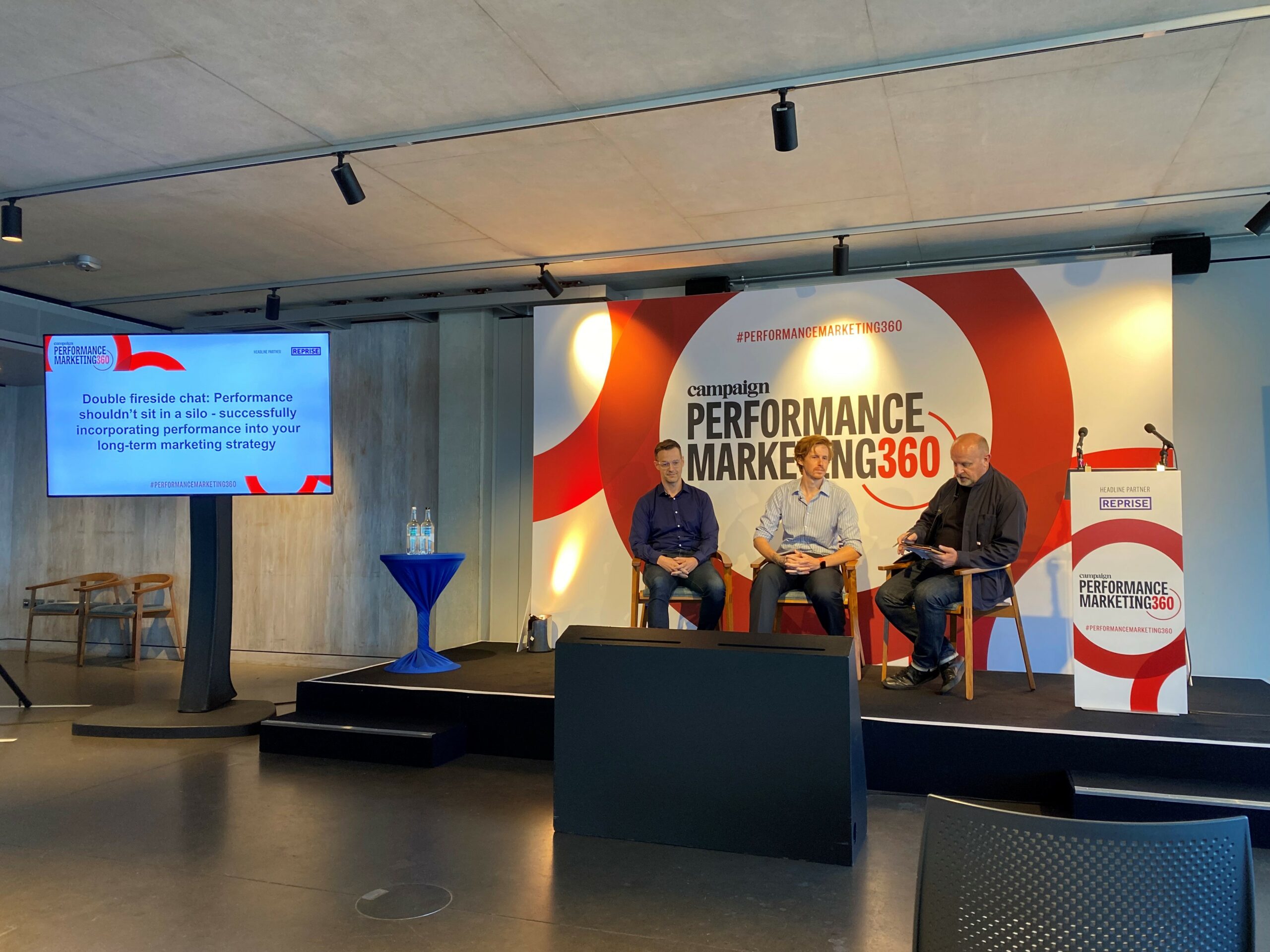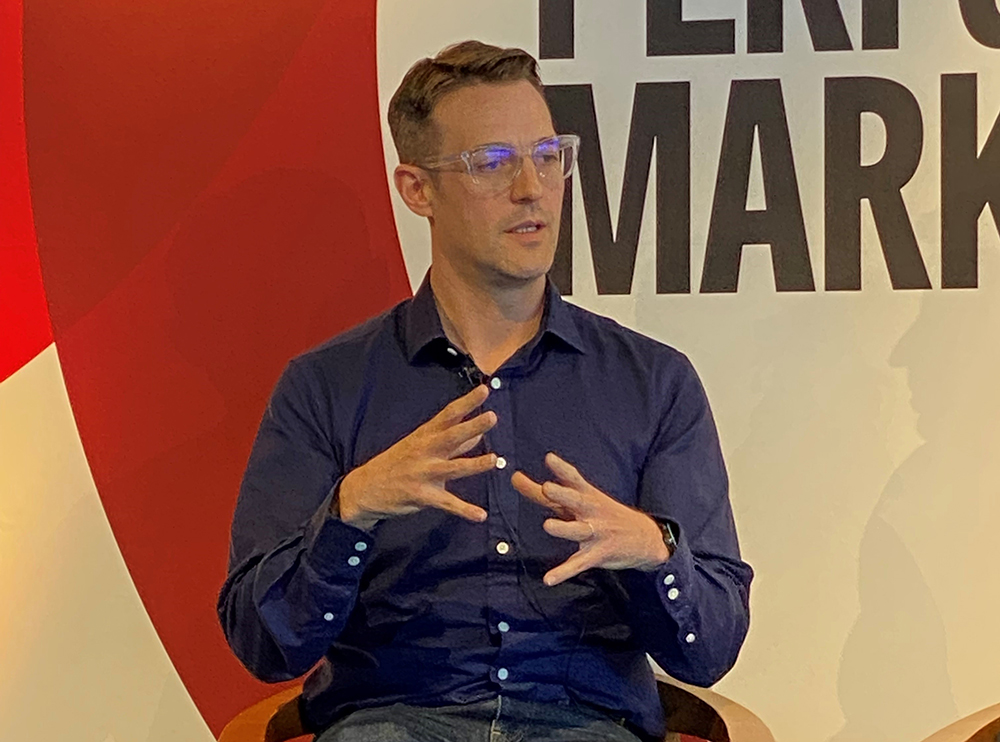Why performance marketing cannot sit in silo: Performance Marketing 360.
“Performance marketing is not simply a tap that you can turn on and off whenever you need sales”. That was the key takeaway at this year’s Performance Marketing 360 event, in which Joe Dix, Global Head of Digital at WWF and Danny Blackburn, Chief Strategy Officer at Reprise Digital discussed why performance marketing cannot simply sit in a silo.

During an insightful fireside chat with Matt Barker, Features Editor at Campaign, the pair discussed how performance marketing isn’t simply just another set of tactics to be deployed as and when needed, but instead a mindset that needs to be successfully incorporated into a brand’s long-term marketing strategy.
“Performance marketing is not simply a tap that you can turn on and off whenever you need sales,” said Blackburn, who argued that many brands had become “addicted” to using performance when they needed a short-term boost to the sales numbers.
The pair discussed how it was very easy for brands to look at performance marketing through the lens of short-term sales and last-click metrics, but that doing so meant that brands were likely to be encouraging behaviour that didn’t give them a full understanding of their audiences and encouraged self-interest within their organisations. Instead, stepping back to look at the big picture is critical when creating a unified vision for building a brand.
Blackburn said that the way to approach performance marketing was to focus on the end goal and then reverse-engineer the process to ensure that every element is optimised in conjunction with each other.
“I liken the process to trying to win a Formula1 Grand Prix”, he said. “There are so many elements that go into improving the performance of a car, that all need to work together. You can improve the engine, the brakes, the aerodynamics, the tyres, the driver, the pit-stop team – and all those things must work together to allow you to get around the track more quickly. If you just focus on one, it isn’t going to work”.

“When you have that siloed approach, it’s hard not to have a natural bias towards the thing that looks like it’s delivering the performance and invest in that. What we shouldn’t be asking is ‘how do we make the engine more powerful?’, because that will channel our thinking towards a particular solution. What we should be asking is ‘how do we get around the circuit more quickly?’, and working backwards from there. We really need to elevate the conversation to focus on end goals, not individual metrics.”
One brand that was doing this well, in the eyes of Blackburn, was Carwow.
“They’ve really looked at the journeys that audiences take when it comes to buying a new car, and what questions and emotions people have around what is a big-ticket purchase, and produced a wealth of content that guides the customer through that journey and positions the brand as an important part of the buying process. They’ve really understood the customer journey in a segment where many people have a lot of anxieties about committing to purchase.”
Dix also suggested the travel sector had also done a lot of work in understanding audience needs, in the wake of a difficult couple of years.
“If you look at what the travel sector is doing now in trying to win customers back and get them confident about travel, I think it shows that they’ve really understood their audiences and what they’re looking for,” he said. “It can’t have been easy for many of these brands when, at times, they didn’t know what restrictions may have been or whether consumers would have been able and willing to travel, but they’ve really focused on helping their audiences get more confident about travelling again.”

Both panel members also had lots to say on the role that brand plays in driving performance, how brand marketing needs to be closely connected with performance and why brand and performance really need to be part of the same conversation.
“When I tell people I’m from WWF, more often than not, people will respond with ‘is that the wrestlers or the pandas?’”, quipped Dix. “But our work is about so much more than pandas and that’s a challenge for us because when we’re associated with just one element of conservation, it can be difficult to cut through and drive donations around a lot of the work that we do.”
Blackburn agreed that brand is so important in elevating performance, although there were things that marketers could do to overcome any potential challenges.
“Brand certainly makes performance easier, but it is also possible for marketers from lesser-known brands to punch above their weight”, he suggested.
“In those cases, where brand activity may not be as strong as you would like, it’s really important to look at those smaller, incremental optimisations that can add up to improve performance.”
To learn more about what we discussed at Performance Marketing 360, download our free whitepaper; Rethinking Performance Marketing.
 Authored by
Authored by 



